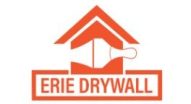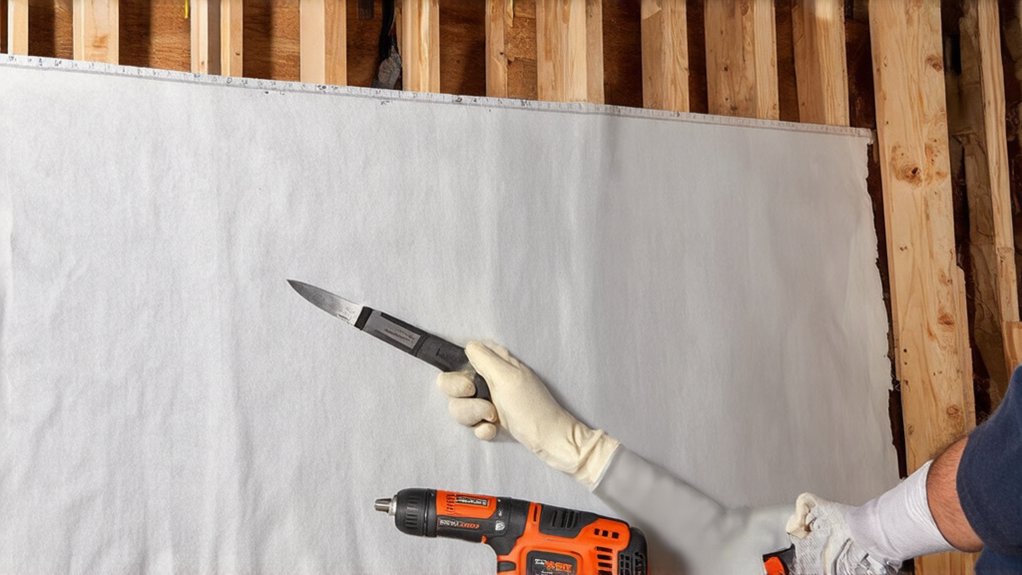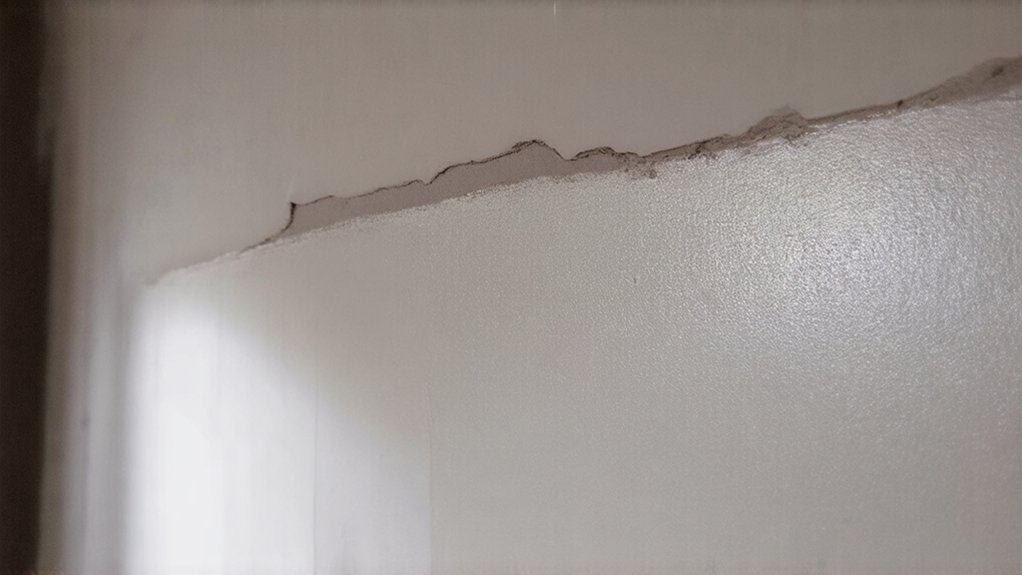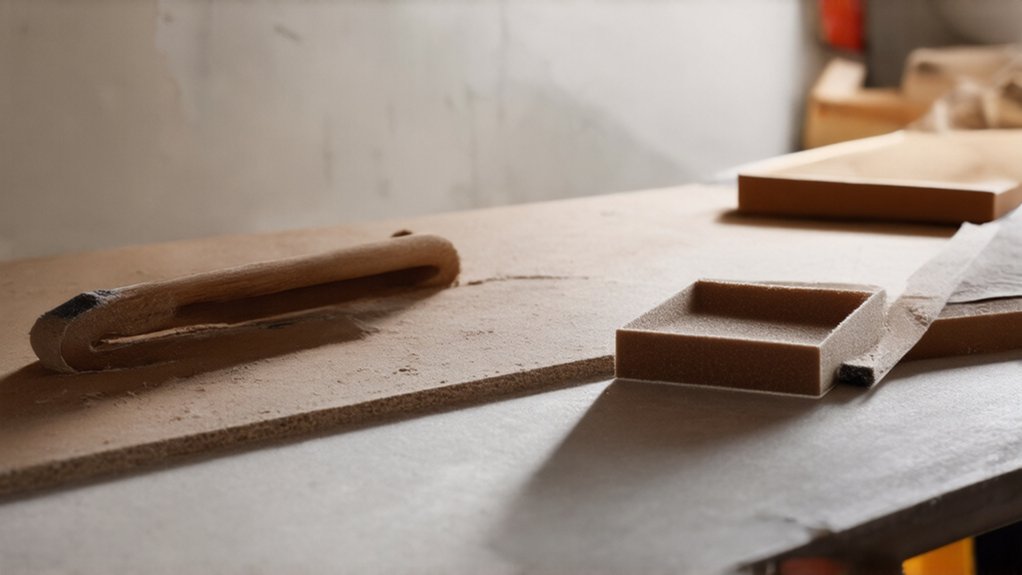When installing drywall in your basement, you'll want to start by thoroughly evaluating moisture levels and selecting moisture-resistant materials like green board or purple board. Carefully prepare your walls by checking framing stability and installing high-quality vapor barriers. Install insulation between wall studs, seal all seams, and hang drywall panels precisely. Secure panels with screws every 8 inches, maintaining tight seams. Keep exploring for more expert renovation perspectives.
Assess Basement Moisture Levels Before Starting
Before diving into your basement drywall project, you'll want to carefully assess moisture levels to prevent potential damage and costly repairs.
Start by using a moisture meter to test moisture levels in walls, floors, and corners. You'll need to inspect for leaks around windows, pipes, and foundation walls, looking for water stains, mold, or dampness.
If you find high moisture readings or signs of water intrusion, address these issues before hanging drywall. Waterproofing and proper ventilation can help create a dry, stable environment for your renovation. Drywall repair professionals recommend addressing moisture issues to ensure a successful basement renovation.
Choose the Right Type of Drywall for Below-Grade Spaces
Since basements are prone to moisture challenges, selecting the appropriate drywall is crucial for a successful renovation. Your choice can make or break your basement's long-term durability and appearance.
Use moisture resistant drywall specifically designed for below-grade spaces. Select green board or purple board for enhanced water protection. Consider mold resistant drywall to prevent potential health hazards. Opt for materials rated for high-humidity environments.
These specialized drywall types provide superior protection against potential water damage and mold growth. By investing in the right materials upfront, you'll save yourself costly repairs and headaches down the road. Your basement renovation deserves the best defense against moisture-related issues.
Professional drywall installation in Erie, PA requires expertise to ensure these moisture-resistant materials are correctly applied and protected.
Prepare the Basement Walls and Framing Properly
After selecting the right moisture-resistant drywall, you'll want to confirm your basement walls and framing are ready for installation. Inspect the framing stability carefully, checking for any warped or damaged wooden studs that could compromise your project's success.
You'll need to evaluate the subfloor condition, verifying it's level, clean, and free from moisture issues that might cause future problems. Take time to address any structural concerns before hanging drywall. Proper preparation prevents potential headaches and secures a professional, long-lasting finish that'll make you proud of your basement renovation.
Install Vapor Barriers and Insulation Strategically
When tackling basement drywall installation, strategically installing vapor barriers and insulation becomes essential for creating a comfortable, moisture-resistant living space. Your approach to vapor barrier placement directly impacts the room's long-term performance and comfort.
Select a high-quality, moisture-resistant vapor barrier to protect against potential dampness. Install insulation carefully between wall studs, ensuring complete and even coverage. Seal all seams and edges of the vapor barrier to prevent moisture infiltration. Use rigid foam insulation for boosted thermal performance and moisture control.
Proper installation will revamp your basement into a welcoming, energy-efficient area.
Hang and Finish Drywall With Precision
As you progress with your basement renovation, hanging and finishing drywall requires careful technique and attention to detail. You'll want to measure drywall consistently and maintain tight seams between panels.
Start by cutting panels precisely to fit your wall spaces, ensuring minimal gaps. Use a sharp utility knife and straight edge for clean cuts. When hanging, press panels firmly against studs, leaving a slight gap at floor and ceiling for potential movement. Secure with screws every 8 inches, ensuring they're slightly countersunk.
This methodical approach will help you achieve professional-looking results.
Protect Your Finished Basement Walls From Future Moisture Damage
Once your drywall is perfectly hung, safeguarding your newly renovated basement from moisture becomes the next critical step. You'll want to protect your investment and create a lasting, comfortable space.
- Apply waterproof sealant to concrete walls before installing drywall
- Use moisture-resistant drywall panels designed for basement environments
- Install a dehumidifier to control indoor humidity levels
- Guarantee proper ventilation with strategic air circulation methods
Taking these proactive measures will help you maintain a dry, comfortable basement for years to come.
Frequently Asked Questions
Can I Install Drywall Directly Over Concrete Basement Walls?
You can't install drywall directly on concrete walls. You'll need to create a moisture barrier and frame a stud wall first, which helps control dampness and provides a proper surface for your drywall installation.
How Long Does It Take to Complete a Basement Drywall Project?
You'll typically complete a basement drywall project in 3-5 days, depending on room size. The drywall installation process involves measuring, cutting, hanging, taping, and finishing, with drying time between stages. Your careful work will alter the space.
What Tools Do I Need for a Successful Drywall Installation?
You'll need a utility knife, drywall saw, tape measure, straightedge, drill, screws, and mud pan. Choose the right drywall thickness, expert precise cutting techniques, and you'll confidently tackle your project like a pro renovator.
Is Special Drywall Mud Required for Basement Renovation Projects?
You'll want moisture-resistant, mold-resistant drywall mud for basement projects. It'll protect your space from potential water damage and help create a safe, resilient environment that keeps your renovation looking great and your family healthy.
Can I Hang Drywall Myself, or Should I Hire a Professional?
You can tackle drywall yourself, but consider DIY challenges. Contractor recommendations suggest hiring a pro if you're inexperienced. Your skills and comfort level matter—don't be afraid to seek help for a polished, professional-looking basement renovation.



